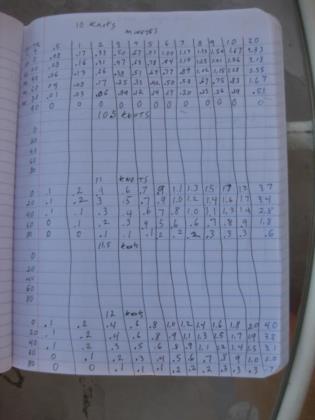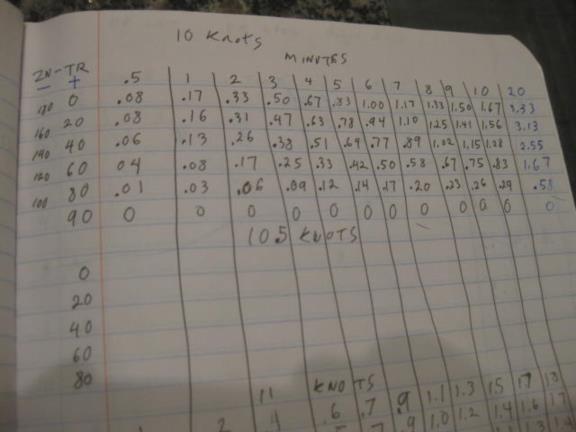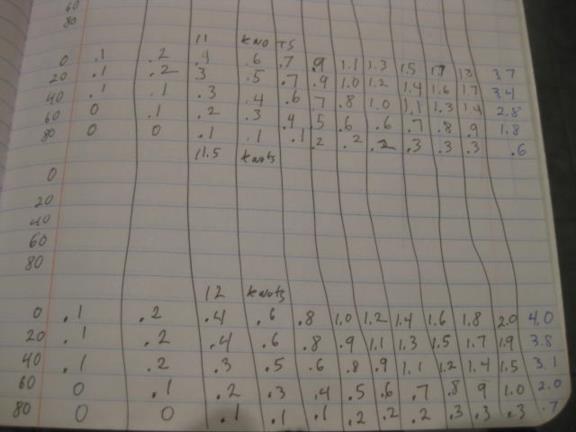
NavList:
A Community Devoted to the Preservation and Practice of Celestial Navigation and Other Methods of Traditional Wayfinding
From: UNK
Date: 2010 Feb 16, 01:28 -0800
I first computed the data for ten knots. The first two columns list the relative azimuth (ZN-TR) of the LOP to be advanced. I selected an interval of 20 degrees, 0, 20, 60, 80 and 90 for bodies ahead of the vessel with a plus sign (+) and 100, 120, 140, 160 and 180 for bodies behind the vessel with a minus sign (-) for applying the adjustment to sextant altitude. The values for 90 degrees are always zero so I omitted this for the other speeds. I also decided that the values I calculated for ten knots to one-hundredths of a minute of arc was gilding the Lilly so only listed them to one-tenth of a minute for the other speeds. The computation is easy. For 0 and 180 relative azimuths the adjustment is simply the distance covered by the ship during the period of time. For other relative azimuths you simply multiply the full value by the cosine of the relative azimuth.
Note the signs of the adjustments are for applying the adjustment to sextant altitude. This is opposite to my prior posts where the signs of those adjustments were for applying them to computed altitude which is the normal procedure in flight navigation. Making the adjustment to sextant altitude works well for marine practice in which the timing of the sight is random and is not preplanned and you only need to add one more line to your sextant correction form.
Give it a try and you will see that it is easier to advance LOPs this way and it is as accurate as the more traditional method.
http://www.navlist.net/m2.aspx?i=105937&y=200807
http://www.navlist.net/m2.aspx?i=105938&y=200807
https://navlist.net/img/105924.ho%20249%20extracts%20.pdf
gl









